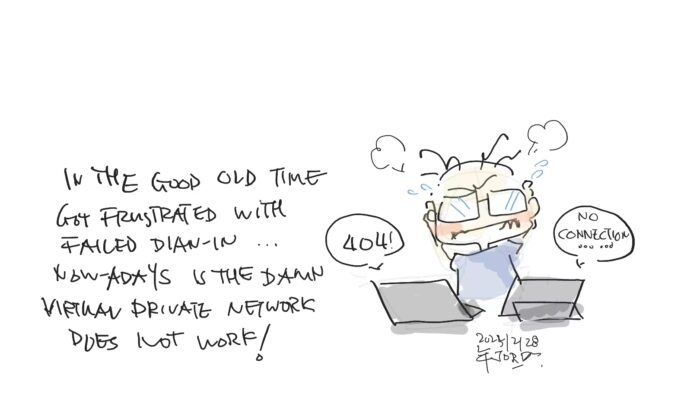
2-28 #VPN : Motorola is showing off a concept phone with a rollable display; Samsung Electronics is investing aggressively in India; Apple and Google have expanded their phone production in India; etc.

IC channel manufacturers admit frankly that the current speed of destocking is still slower than originally estimated. IC channel manufacturers analyze whether the current short order in the market is a flash in the pan, inflation and Fed interest rate hikes, the dynamics of the Russia-Uzbekistan war, and whether mainland China will bring retaliatory buying demand after the unblocking is the focus of observation. For example, IC channel manufacturers said that assuming that the original estimated destocking speed is to purchase 0.5 months of goods, and then sell 1 month of goods, they can gradually reduce 0.5 months of inventory; but the actual situation is to purchase 0.6 to 0.7 month’s supply, but only sold 0.8 to 0.9 month’s supply, which led to a slower than expected depletion of inventory. (Laoyaoba, UDN)
Samsung’s design partners for its chip foundry business saw their operating profits halved in 2022. Samsung Foundry’s Design Solution Partners ADTechnology, Gaonchips, and Coasia saw their revenue and operating margin rate impacted heavily by the global economic downturn. (The Elec)

Qualcomm has announced that multiple phone makers including Xiaomi, OPPO, vivo, Motorola, Nothing and Honor are bringing satellite communication capabilities to their phones. Qualcomm has unveiled its Snapdragon Satellite technology in partnership with satellite service provider Iridium. Using this solution, smartphones can have capabilities of two-way texting and other messaging applications using satellites in emergency situations. Qualcomm has said that Snapdragon Satellite will be available across upcoming RF modems and multiple models of 8 and 4 series processors for smartphones.(Android Headlines, PC Mag, Qualcomm, TechCrunch, Inquirer)

TSMC’s 7 / 6nm and 5 / 4nm are both suffering due to the sharp drop in demand for PCs and mobile phones, but unexpectedly, TSMC’s demand for 5nm has suddenly increased recently, and 2Q23 will return to a full-load boom. According to the semiconductor supply chain, urgent orders come from NVIDIA, AMD and Apple’s AI and data center platforms, among which the popular ChatGPT has the greatest thrust. This unexpected grand event will also drive TSMC’s performance to bottom out in the first quarter ahead of schedule, start to climb in 2Q23, and return to peak season levels in 3Q23. However, foundries with backward indicators in the industry chain collapsed in the first quarter, including TSMC’s frank admission that due to the weakening of terminal markets such as smartphones and PCs and delays in customer product progress, the utilization rate of 7/6nm production capacity fell in 1H23. It is no longer at the high point of the past 3 years and is lower than expected. It is estimated that the demand will slowly pick up in 2H23. (Digitimes, press, UDN)
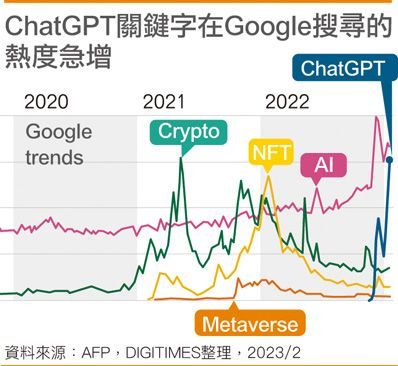
Qualcomm’s CEO, Cristiano Amon talked about Apple’s rumored 5G chipset. Amon believes that their own modem will be ready in 2024, but adds that “if they do need ours they know where to find us”. Basically, Amon saying “please still use our modem”. Apple has been using Qualcomm’s 5G modems since 2020, when it added 5G to its iPhones. (Cult of Mac, Twitter, Apple Insider, Android Headlines)
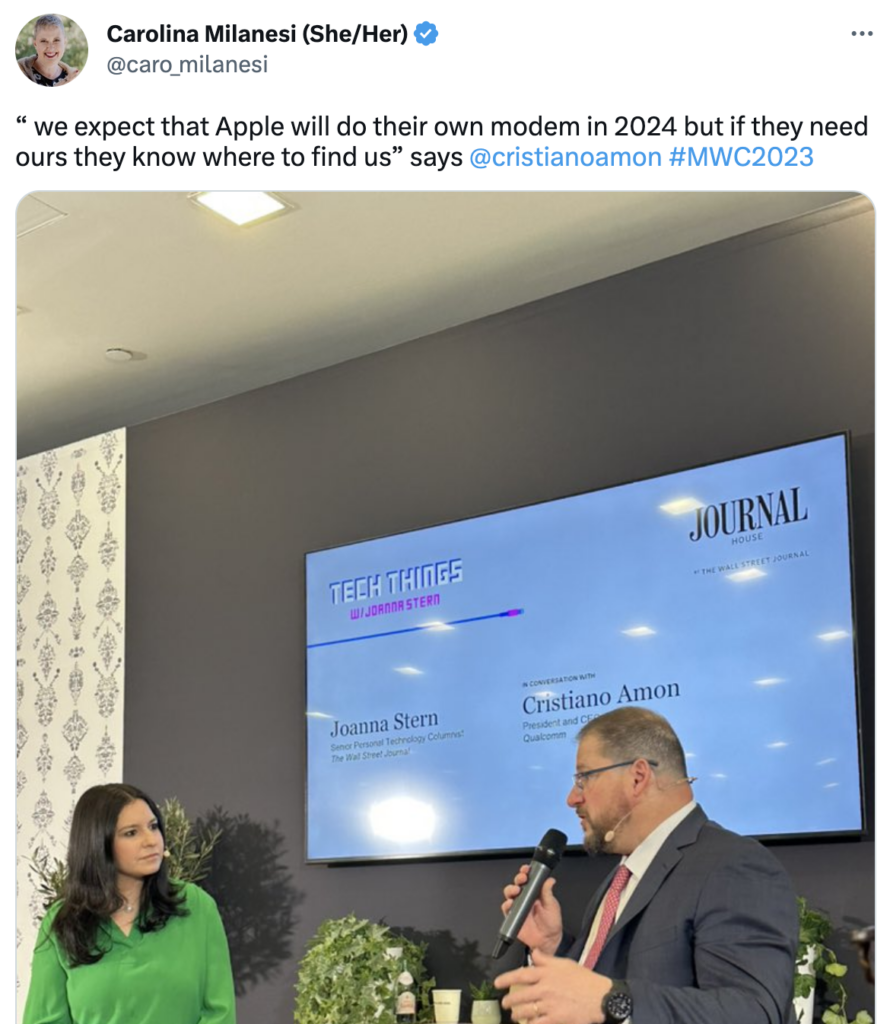

Motorola is showing off a concept phone that features a rollable display that allows the screen to extend from 5” to 6.5” in about 3 seconds. When the display is retracted, it wraps around the bottom of the phone so that part of the display is visible on the back. In this mode, the phone is also smaller, easier to use with one hand, and easier to slide in your pocket. When the screen is unrolled, it provides a taller primary display with extra room for displaying content. The fully-extended display is a 6.5” screen with a 22:9 aspect ratio. The company is calling the concept a “Rizr” phone.(Android Headlines, Twitter, Liliiputing)
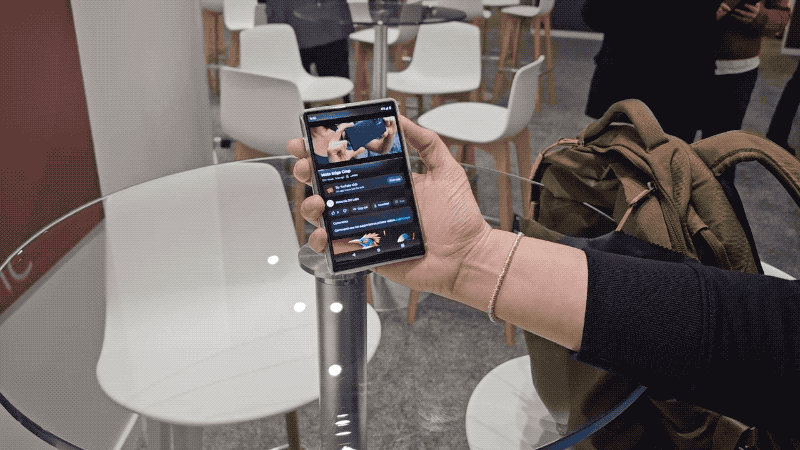
BOE CEO Gao Wenbao is visiting Japan for a meeting with those at display production equipment maker Canon Tokki. His visit is likely being made to secure earlier delivery of deposition machine made by Canon Tokki needed for the production of Gen 8 OLED panels. Gen 8 OLED panels are aimed at use for IT products such as tablets and notebooks; the OLED panels are cut out from Gen 8 substrates that are larger than Gen 6.(The Elec, Techxinwen)
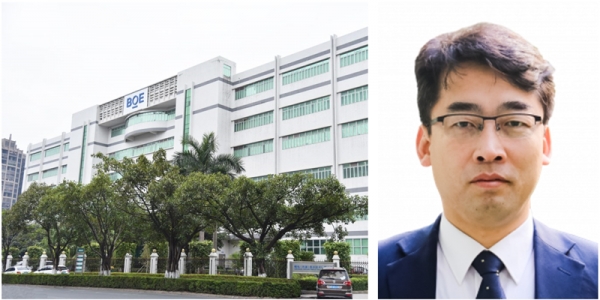
OLED material company Lordin has registered a patent related to blue OLED that has 4 times the luminance efficiency than previously. Lordin CEO Oh Hyoung-yun said that the technology on the patent was differentiated from those in the US and Japan. The company was aiming to commercialize the technology on the patent in 2024, Oh added. In 2021, when Lordin filed for the patent, the CEO said that the patent offers over 90% internal light emission efficiency in the blue OLED material. This is triple that of the 25% in efficiency offered in current OLED panels used in smartphones and TVs, the CEO said. (The Elec)
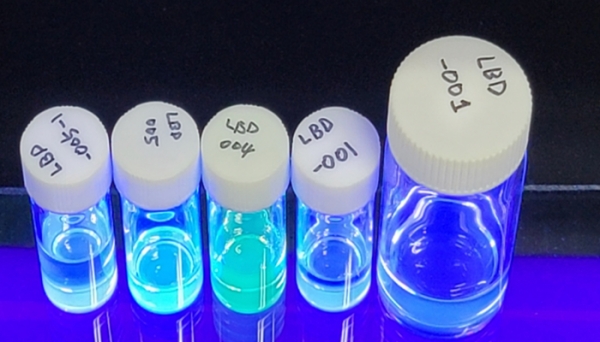
LG Group is expected to work even more closely with Apple with the development of extended reality (XR) such as virtual reality (VR) and augmented reality (AR). The displays of Apple’s first XR devices are likely to be supplied by LG Display and Sony. LG Display is developing OLEDoS panels to that end. The panel is characterized by OLED application to a silicon wafer and a very high resolution of 3,500 PPI for more realistic AR. LG Innotek recently released two-metal COF, which is characterized by at least 4,000 circuits that can be formed on both sides of one film whereas existing COFs are for single-sided circuit formation. The increase in circuit count means improved pixels and a higher level of immersion.(Laoyaoba, Business Korea)
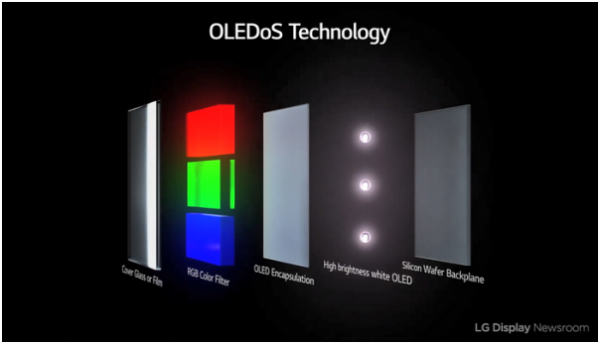

Huawei has introduced XMAGE mobile camera imaging technology, which the company claims is a whole new technology that helps consumers capture the real beauty of the world. After their separation from Leica, Huawei officially unveiled this new technology. According to Huawei, this mobile imagery brand has clearly defined the structure of Huawei’s Mobile imaging strategy including innovation, user experience, and culture exploration.(Huawei, Huawei, Huawei Central, My Drivers)
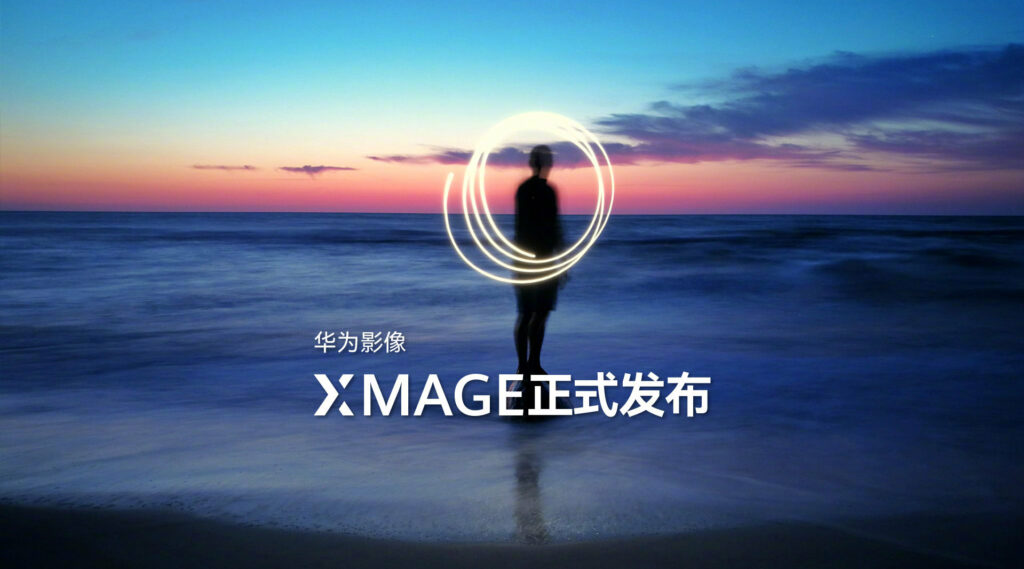
Paris-based startup Prophesee, a maker of camera chips inspired by the way the human eye works, has announced a collaboration with Qualcomm that will optimize Prophesee’s Event-based Metavision sensors for use with premium Snapdragon mobile platforms to bring the speed, efficiency, and quality of neuromorphic-enabled vision to mobile devices. While today’s camera chips continuously process the full frame of images, Prophesee’s chip will only process changes in the scene, such as light or movement, which makes it faster and requires less computing power. The technology works with pixels on the sensor that only send information to the processor when there is change, while pixels that perceive no change stay muted. There are a million pixels on Prophesee’s latest chips. Manufacturing of the chip will be outsourced to Sony Group Corp. (VentureBeat, Prophesee, Reuters, Market Screener)


LG Energy Solution has said that it will be forming a joint venture with Ford and Turkey’s Koc Group that will build a battery factory in Turkey. The three will aim to secure 25GWh in annual production capacity and start production in 2026. Ford and Koc had such an agreement originally with SK On, but it seems it has ditched the South Korean battery maker for its rival LG Energy Solution. The joint venture will produce batteries for vehicles aimed at North America and Europe, LG Energy Solution. LG Energy Solution currently has an annual battery production capacity of 200GWh. It produces these batteries in 6 countries. It began supplying EV batteries to Ford in 2011. (The Elec, Electrive)
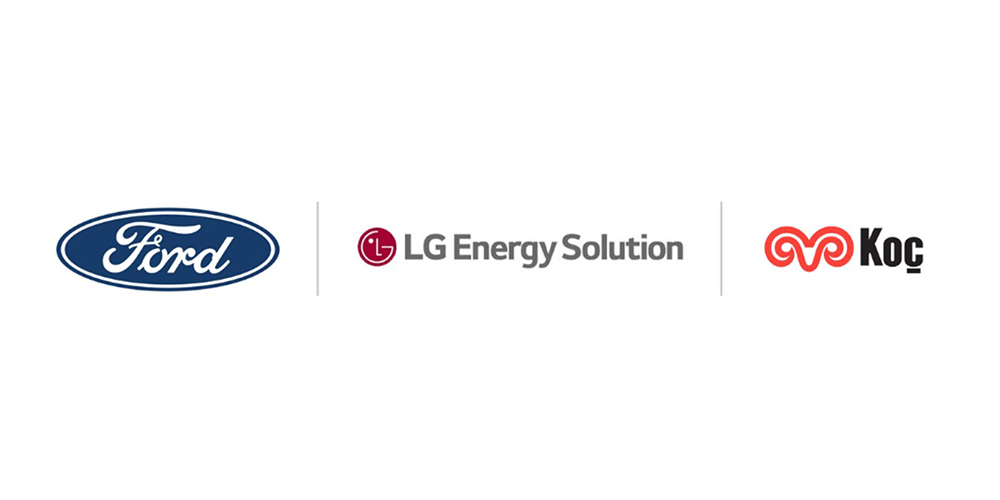
Honor’s CEO George Zhao is introducing the first silicon-carbon battery. It is claimed to offer 12.8% higher energy density compared to traditional lithium batteries that use graphite on the anode. A higher energy density would mean higher battery capacity. A standard lithium battery does not have much left in it once its voltage drops to 3.5 volts – this is where silicon-carbon shines as it has 240% more capacity left at 3.5V than the standard battery, which leads to the 12.8% overall improvement.(GSM Arena, Gizmo China, My Drivers)
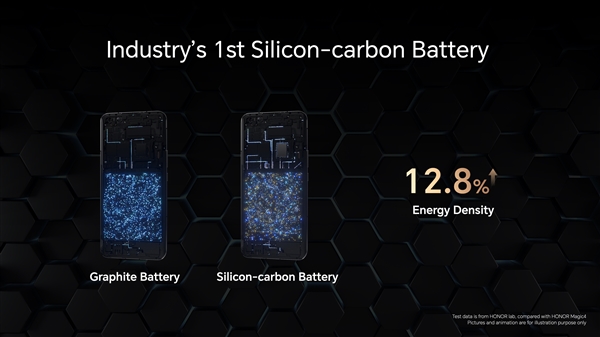

Tecno has unveiled its brand-new Chameleon changing colour technology. The Chameleon Coloring Technology is a full-spectrum electrically-controller prism coloring technology, which uses a grid of sub-micron prism material that changes direction when an electric field is applied. By precisely controlling the direction of the prism, the material can refract light in multiple different wavelengths, giving the appearance of a wide range of iridescent colors. The material can change colors in 0.03 seconds. (GSM Arena, Gizmo China)
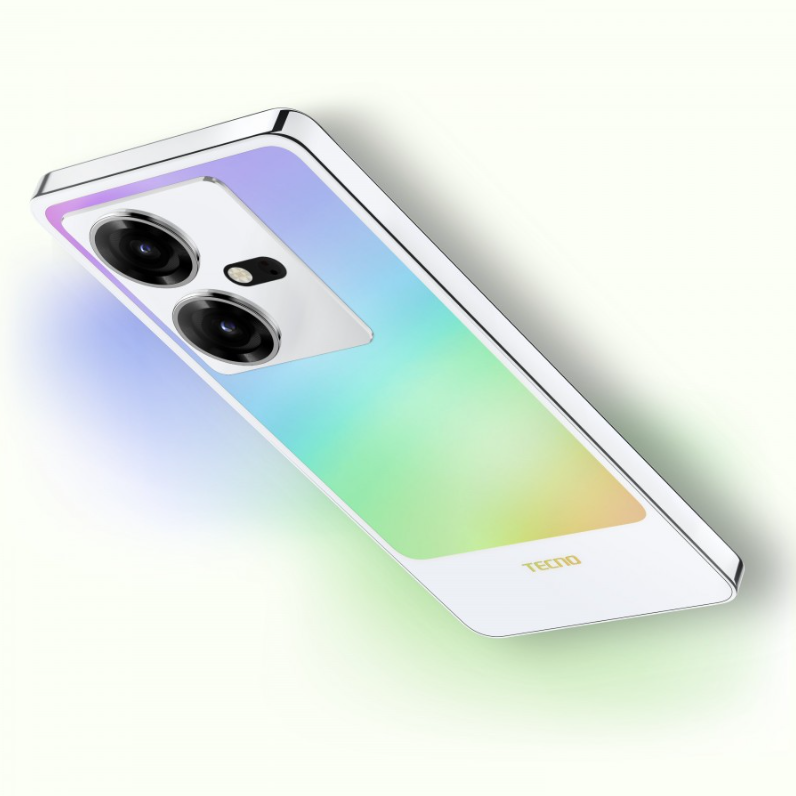
OnePlus showed off a new concept version of the OnePlus 11. The phone features a brand new Active CryoFlux liquid cooling engine inside that lowers the phone’s temperature by up to 2.1°C. Lower temperatures increase frame rate and charging speed marginally, and the new cooling engine can be seen through the semi-transparent back. A piezoelectric ceramic micropump sits underneath the fancy back of the phone, taking up less than 0.2 square centimeters of space. That pump circulates special cooling liquid through pipelines that sit atop the phone’s processor and other heat-producing electronics. (Android Central, Trusted Reviews)
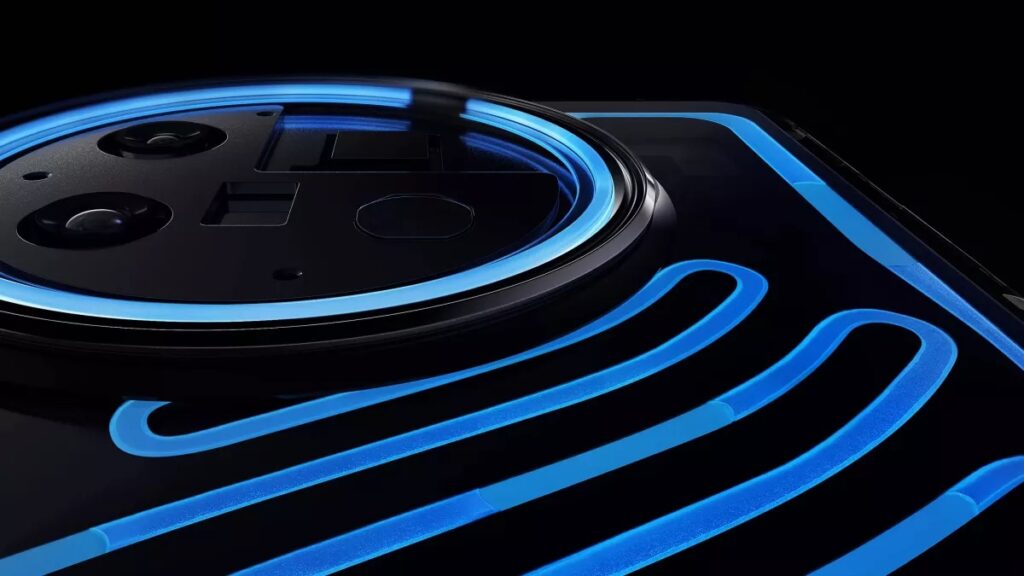

Amazon Web Services, an Amazon.com company, has announced the general availability of AWS Telco Network Builder, a fully managed service that helps customers deploy, run, and scale telco networks on AWS. Now, communications service providers (CSPs) can use their familiar telecom industry standard language to describe the details of their network (e.g., connection points, networking requirements, compute needs, and geographical distribution) in a template uploaded to the service. (Yahoo, TechCrunch, AWS)
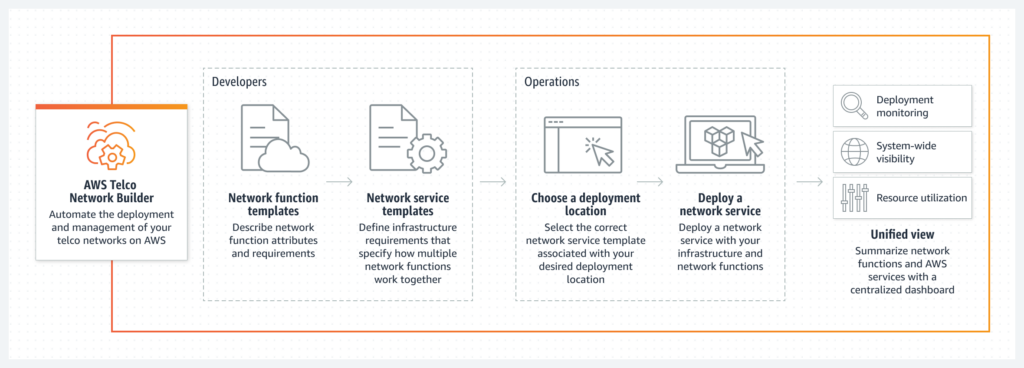

Google is making a slight change to the way Rich Communication Services (RCS) looks in the Google Messages app. Previously, it would show up as “Chat Features” in the settings of the app. But now, Google is opting to go with “RCS Chats”. Google has confirmed that this change is currently rolling out to users enrolled in the Messages open beta, and that more people will see “RCS” over time.(Android Headlines, 9to5Google)
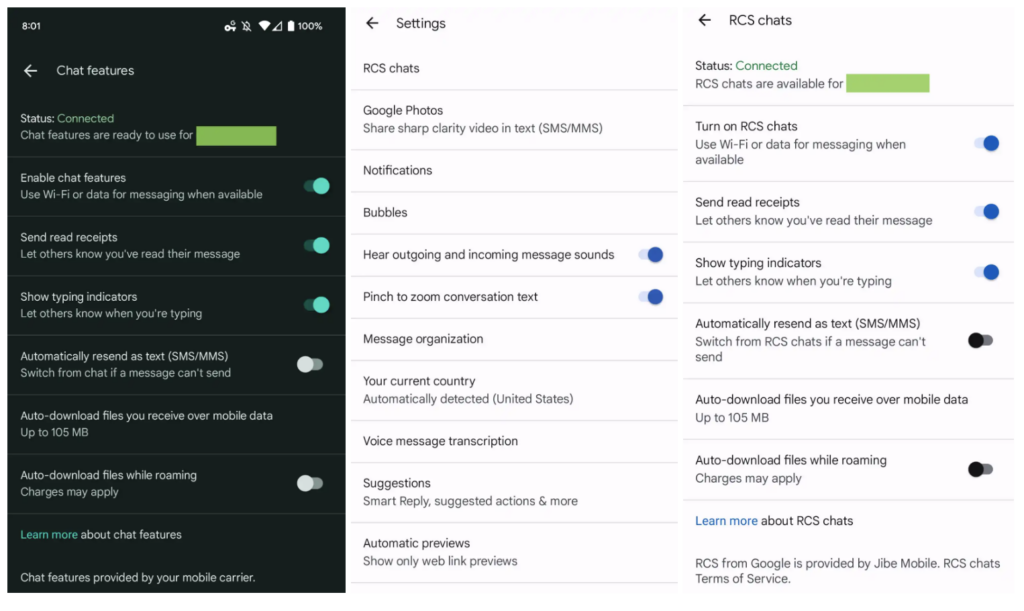
Samsung Electronics is investing aggressively in India. Samsung has decided to produce its next-generation foldable smartphones in India to make it a key smartphone production base. Samsung Electronics has produced mid- and low-priced smartphones in India. As U.S. export restrictions on China are rapidly disrupting the Chinese semiconductor industry, some analysts are raising the possibility of Samsung Electronics relocating its semiconductor production facilities. In 2022 alone, 5,746 Chinese semiconductor companies canceled their business registrations. In China, the number of semiconductor companies that went out of business totaled 1,397 in 2020, but it soared to 3,420 in 2021. The Indian government is actively asking Samsung Electronics to consider building a semiconductor plant in India.(Business Korea, Laoyaoba)
Wang Hua, General Manager of Xiaomi’s Public Relations Department, said that the main structure of the company’s second smartphone factory in Beijing has been completed, and the whole project will be completed by the end of 2023. It is expected that all mobile phone production lines will be installed in the new factory by July 2024. The factory in Changping District, Beijing, covers an area of 58,300 square meters, and has production lines including patches, board testing, assembly, machine testing and packaging. It is estimated to produce 10M smartphones every year.(Laoyaoba, Sina, My Drivers, Pandaily)

United States Treasury Secretary Janet Yellen has said that technology companies like Apple and Google have expanded their phone production in India, and as the US looks forward to the future, she is eager to deepen ties in the technology sector. She has highlighted the US approach called “friendshoring” which seeks to bolster the resilience of supply chains by strengthening integration with trusted trading partners, including India. Yellen has further explained that the US is investing in digital technologies that will drive inclusive and resilient growth in India through the Partnership for Global Infrastructure and Investment (PGII). The US aims to mobilize USD200B through 2027 for the PGII, and Yellen expressed the country’s commitment to partnering with India to continue investing in the future. (Gizmo China, Gadgets360)

Google has announced a slew of new features for Android, Chromebook and Wear OS that are designed to improve connectivity, productivity and accessibility. Among the new features is upcoming Fast Pair support on Chromebook, Google Keep shortcuts for your phone and smartwatch and new accessibility modes for Wear OS. Fast Pair will soon be able to connect new Bluetooth headphones to a Chromebook with just a tap. Google Meet is soon offering noise cancellation on more Android mobile devices to filter out background sounds when talking during a meeting. Google Drive users will now be able to do freehand annotation on Android phones and tablets. (Digital Trends, TechCrunch, Google, Android Central, Mashable)
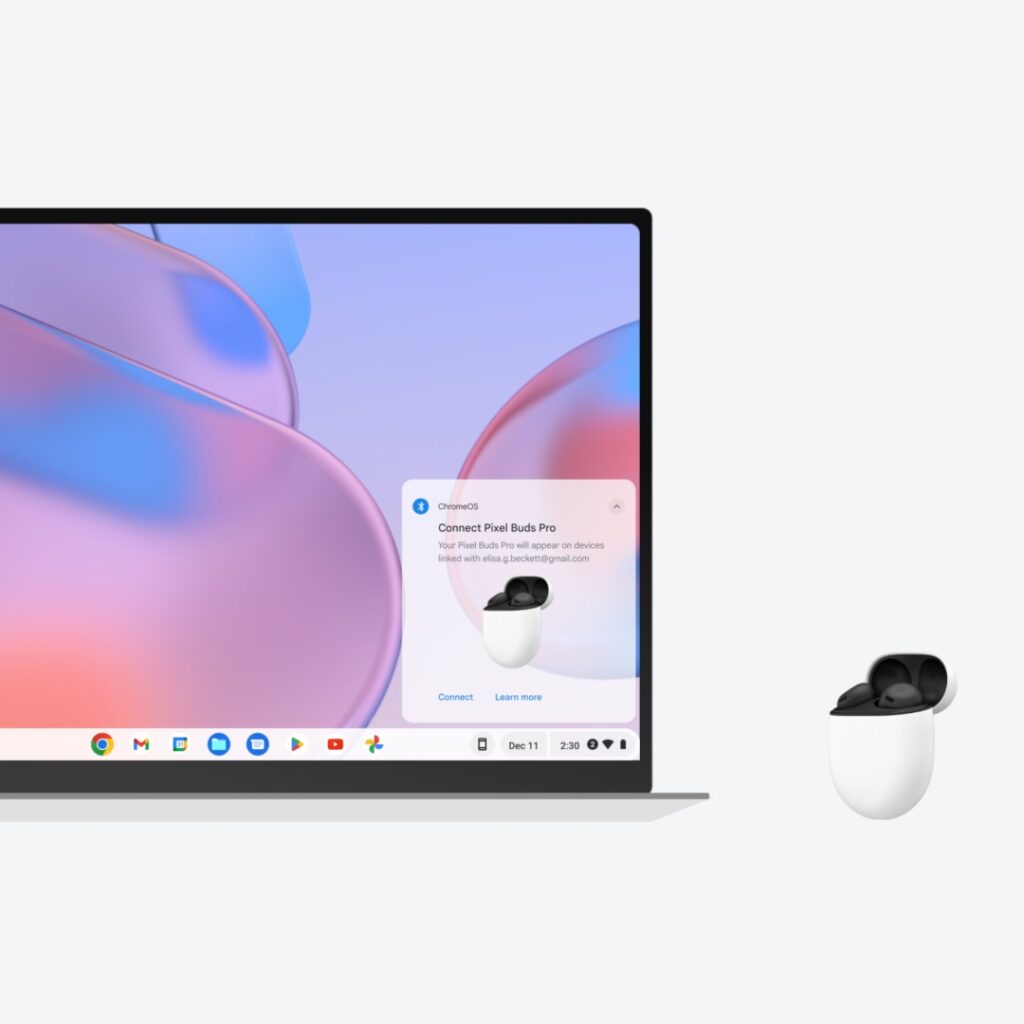
Apple has restarted development of a fourth-generation iPhone SE with a 6.1” OLED display and an Apple-designed 5G chip, according to TF Securities analyst Ming-Chi Kuo. The new iPhone SE will be equipped with Apple’s custom-designed 5G modem, with connectivity limited to sub-6GHz bands of 5G. The current iPhone SE already supports 5G, but uses Qualcomm’s custom Snapdragon X57 chip. (Twitter, MacRumors, GSM Arena)
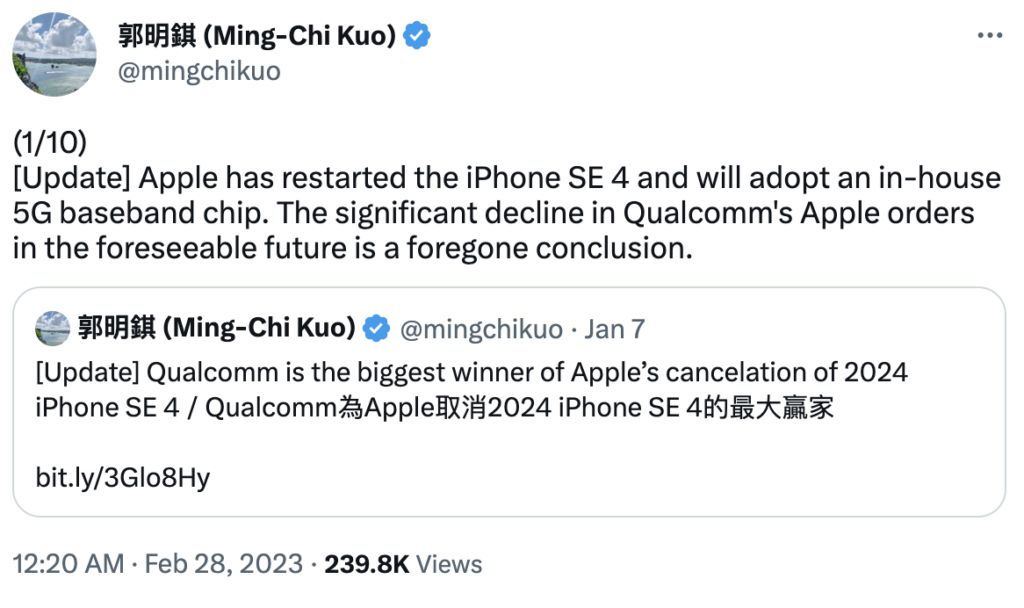

Apple’s first mixed-reality headset may feature “in-air” typing capabilities and can be used independently without an accompanying iPhone, according to Bloomberg’s Mark Gurman. “In-air typing,” Apple’s method for text input using eye movements and hand gestures with the device, is apparently enabled on the latest internal prototypes. (MacRumors, Bloomberg)

Chinese EV giant BYD will invest CNY10B (USD1.46B) in Changzhou, eastern China’s Jiangsu Province, to produce key parts for new energy cars. The project will have an expected annual production of 300,000 sets of high-end intelligent key parts such as smart powertrains and transmission systems.(Laoyaoba, Changzhou, Forbes China, EET-China)
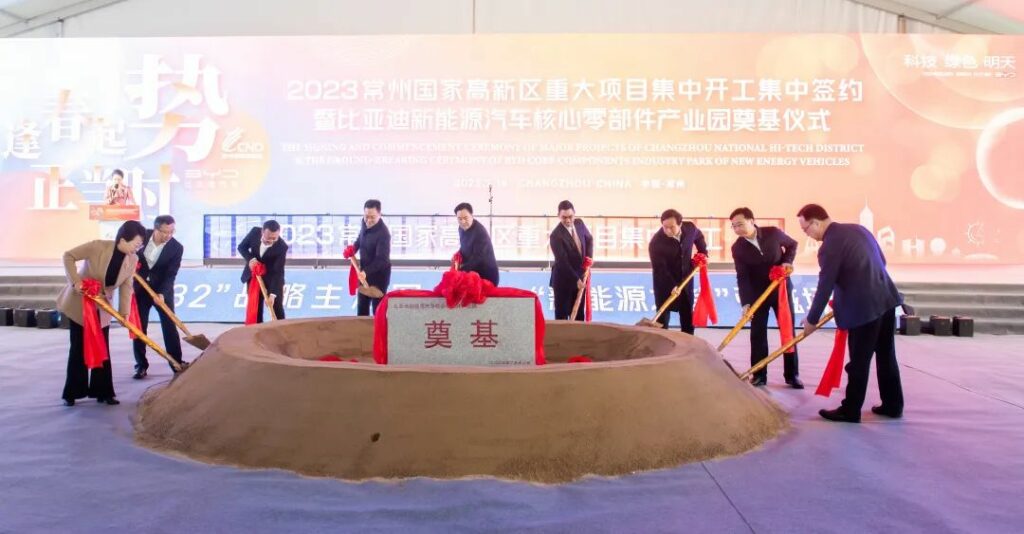
According to Philippine Trade Undersecretary Ceferino Rodolfo, the Philippines, Vietnam and Indonesia are competing to host an electric-vehicle assembly plant for BYD, the world’s second-largest maker of EVs. BYD, which is already set to build its first EV production facility in Southeast Asia in Thailand, is still exploring whether the new factory will be a full-blown assembly plant or a final-assembly facility with car parts shipped in from overseas, said Lanie Dormiendo, director for the Philippines’ International Investments Promotion Service. Talks between BYD and Indonesia over a potential investment in an EV factory in the country are ongoing. (Laoyaoba, Bloomberg, Caixing Global, Business Insider)
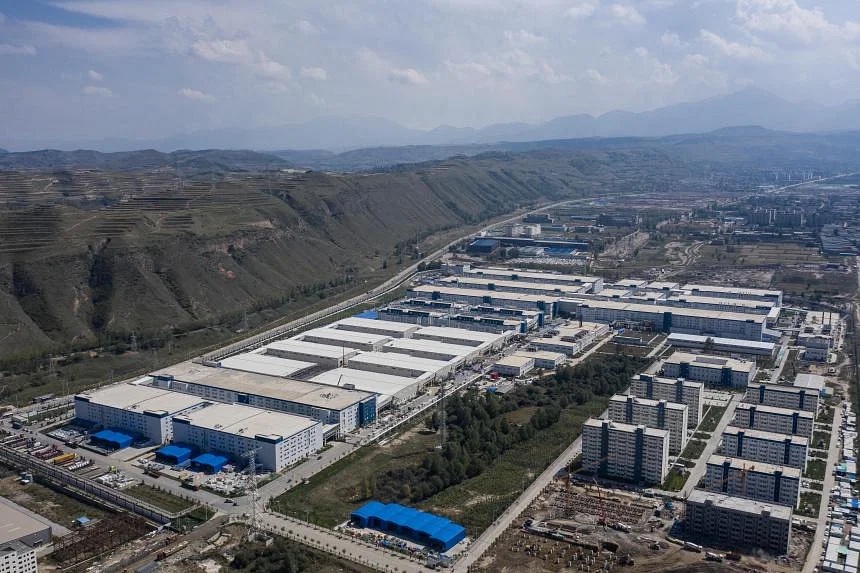
Cisco has announced it is working with Mercedes-Benz to provide an optimal mobile office experience in its new Mercedes-Benz E Class vehicles. Mercedes-Benz and Cisco are jointly addressing the needs of the ever-evolving hybrid workforce. Together, the companies are transforming the car into a home office. Drivers will be able to conduct frictionless meetings and calls with Meetings and enterprise grade calling with Webex. These features are all part of the Webex Suite, which provides the continuous, secure, and reliable connectivity that Cisco is known for. Webex’s proprietary audio intelligence technology offers best-in-class noise cancelation, enhancing the experience for the driver and any passengers working in the vehicle.(CN Beta, PR Newswire, Reuters, Market Screener)
